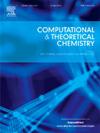Group Fukui potential as a measure of the molecular polarizability
IF 3
3区 化学
Q3 CHEMISTRY, PHYSICAL
引用次数: 0
Abstract
In the present study, we introduced a new method based on group Fukui potential to compute the polarizabilities of organic chemical systems. Here group Fukui potential, ν (f)GROUP was defined as the sum of the Fukui potentials of atoms, ν(f)i in the structure of the molecule as: . Here, N stands for the number of the atoms in the molecule. The performed analyses proved that there is a reliable relation between polarizability and group Fukui potential and polarizabilities (αM) of organic molecules. Using equation , molecular polarizabilities can be accurately and fast predicted. In the given equation, c1 and c2 are constants that take different numerical values for different groups of organic molecules. The proposed method provides compatible results with the results obtained by experimental tools and previously published theoretical methods. In addition, the correlations obtained support the idea that group Fukui potential is also minimized like polarizability in stable states.

群福井电位作为分子极化率的量度
本文提出了一种基于群福井势计算有机化学体系极化率的新方法。这里将群福井势,ν(f) group定义为分子结构中原子的福井势和,ν(f)i为:ν fgroup =∑i=1Nνfi。这里,N代表分子中的原子数。结果表明,有机分子的极化率与基团福井势和极化率(αM)之间存在可靠关系。利用αM=c1νfGROUP+c2方程,可以准确、快速地预测分子极化率。在给定的方程中,c1和c2是常数,对于不同的有机分子群取不同的数值。提出的方法与实验工具和先前发表的理论方法的结果相一致。此外,所获得的相关性支持了在稳定状态下,群福井势也像极化率一样被最小化的观点。
本文章由计算机程序翻译,如有差异,请以英文原文为准。
求助全文
约1分钟内获得全文
求助全文
来源期刊

Computational and Theoretical Chemistry
CHEMISTRY, PHYSICAL-
CiteScore
4.20
自引率
10.70%
发文量
331
审稿时长
31 days
期刊介绍:
Computational and Theoretical Chemistry publishes high quality, original reports of significance in computational and theoretical chemistry including those that deal with problems of structure, properties, energetics, weak interactions, reaction mechanisms, catalysis, and reaction rates involving atoms, molecules, clusters, surfaces, and bulk matter.
 求助内容:
求助内容: 应助结果提醒方式:
应助结果提醒方式:


